Philippines transportation and infrastructure is always a hot topic. As I have mentioned in my previous Survival Tips, the population in Manila causes a number of issues with the most pertinent one being the traffic. If you cannot survive the traffic in Manila, you will not survive in the Philippines. Hopefully, my Survival Tips in this article will help to enhance your chances of survival here.
Philippines Transport And Infrastructure
I’m not going to sugarcoat this and will say now that the traffic here, particularly in Manila, can be absolutely horrendous. Sometimes, it is very difficult to predict what the traffic will be like. Usually during peak hours Monday to Friday, and even Saturdays, it’s a given that the traffic will be horrendous. However, sometimes, inexplicably, on a Sunday afternoon or at 2 o’clock in the morning, the traffic can also be terrible.
However, without a doubt, the worst of the traffic is on ‘payday’. This falls on the 15th and 30th of each month. This really only affects people living in the country more than tourists. However, tourists really should be mindful in case you need to catch a flight or order a taxi to get somewhere.
Then, of course, the traffic is compounded even more when it’s raining. It can literally take two hours to get from one side of town to the other. So basically, it is best to avoid the roads on payday, during afternoon peak hour, or when it’s raining. If you are not used to traffic, this type of scenario will absolutely blow your mind. This brings us to the next subject on being able to navigate your way through this terrible traffic.
Waze And Other Transport Apps
If you don’t have Waze and have never used it before, it is absolutely necessary for Philippines transportation, especially Manila. Even if you are just here on a holiday, and assuming you have data roaming, then you must use Waze. It’s free to download from the Apple App store so you have nothing to lose. Having lived here since 2003, and having regularly been confronted with traffic chaos, I can hold my hand on my heart and say that Waze is the best thing since sliced bread.
If you take Grab (Uber equivalent), they will use Waze or something similar (like Google maps). However, if you have no other choice than to take an everyday taxi, Waze helps to keep the driver honest. Just about every taxi driver will play dumb and take you on the route that is best for his pocket, not yours. Waze will give you complete peace of mind in what can be total chaos. This brings me to our next subject, and one of my pets hates, which is taxis.
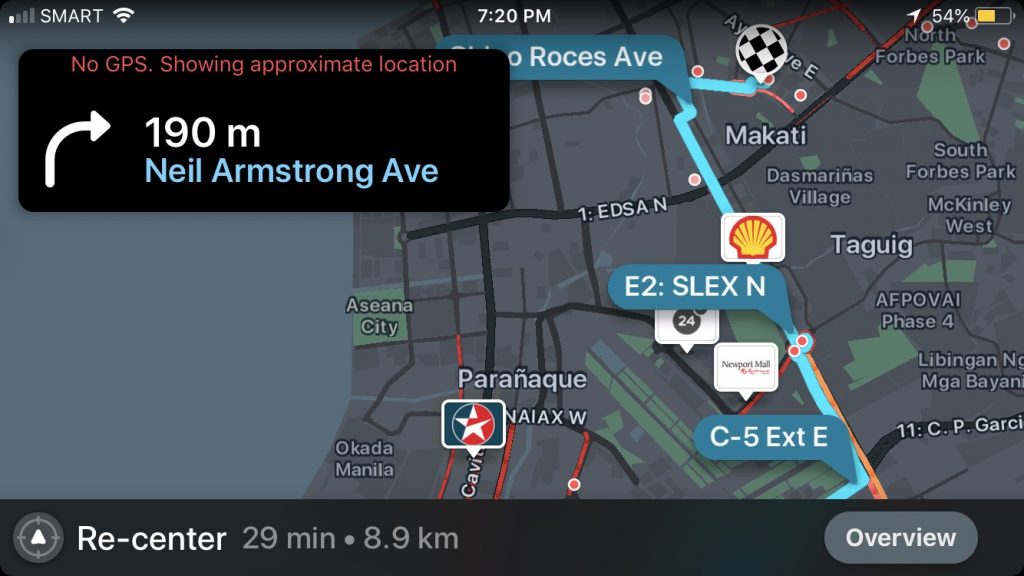
Waze is easily the single best thing that has ever happened to me when it comes to dealing with the traffic in Manila. Not only is it 98% accurate with the ETA based on the chosen route, it also helps to keep the taxi drivers honest. I no longer need to rely on crap excuses about how long it will take to go somewhere so they can overcharge me.
Transport From The Airport
In Manila, the airport is known by the acronym NAIA (Ninoy Aquino International Airport). This is actually made up of four terminals – three international terminals (two of which operate domestic flights also) and one dedicated domestic terminal. Each terminal has free wifi, but occasionally it can be unreliable. So if you don’t have data roaming, you can possibly still use the wifi to try and order a Grab Car. This is your next best option after a hotel vehicle. It’s worth a crack and you are able to get a vehicle more often than not. If you have no other option than to take a taxi, then an airport taxi is your next best option. Here are the things to look out for:
Each of the three terminals has an airport taxi service, however, even by local standards, this isn’t cheap. With a regular everyday taxi, you can travel from the airport to say Makati (the CBD), and it should cost less than P300, less than say USD6. However, I have known people that have been taken advantage of and have paid considerably more than that.
If you take an airport taxi, as mentioned, it is more expensive than a regular taxi. However, at least they are properly monitored and regulated. This provides you with some level of security and trust. The airport taxis are pretty clearly marked (yellow and white in colour), and there is a counter where you can order one. They don’t have a meter and charge a set fee which will depend on where you are going. They should also provide a receipt so you have some sort of record of the journey. At least you know up front how much you will be paying and all but eliminate the chances of being ripped off.
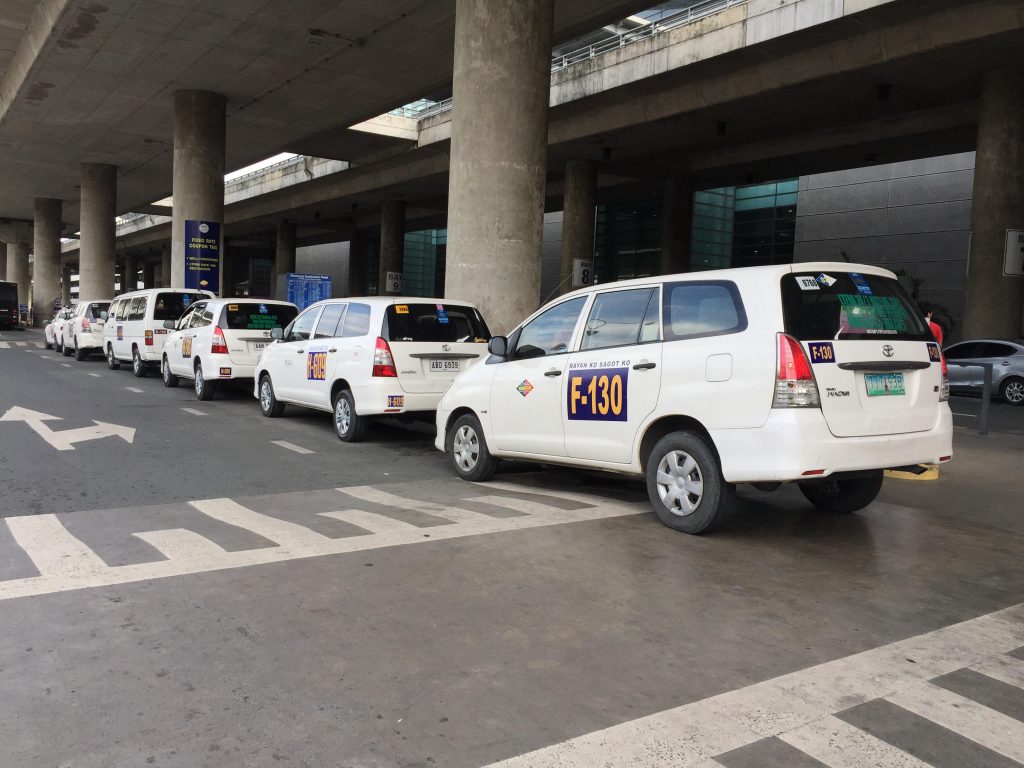
These are the airport taxis at NAIA Terminal Three. You will see they are more like a people mover. If you do need to take a taxi, I would strongly suggest taking one of these over a regular taxi.
Air Transport
The Philippines has several airlines operating domestic flights within the country with around 50 operational airports. There are 11 international airports, 15 Class 1 airports (servicing aircraft with at least 100 seats), 18 Class 2 airports (servicing aircraft with at least 19 seats), and 41 community airports (only a handful of these have a regular schedule). There are also a couple of airlines operating seaplanes.
Air transport in the Philippines is fairly reliable. However, one thing to be mindful of is that during the rainy season, domestic flights are often cancelled or delayed. You need to make sure that you have a contingency plan in place, particularly when travelling during the rainy season.
If you have a connecting flight to another part of the country, you will need to be mindful of the terminal which you depart from. As mentioned earlier, there are actually four terminals at the airport (NAIA). So the airport you depart from might not be the same as the one you arrived at from your international flight. You really need to carefully check your ticket. For a full listing of airports in the Philippines, please click here.
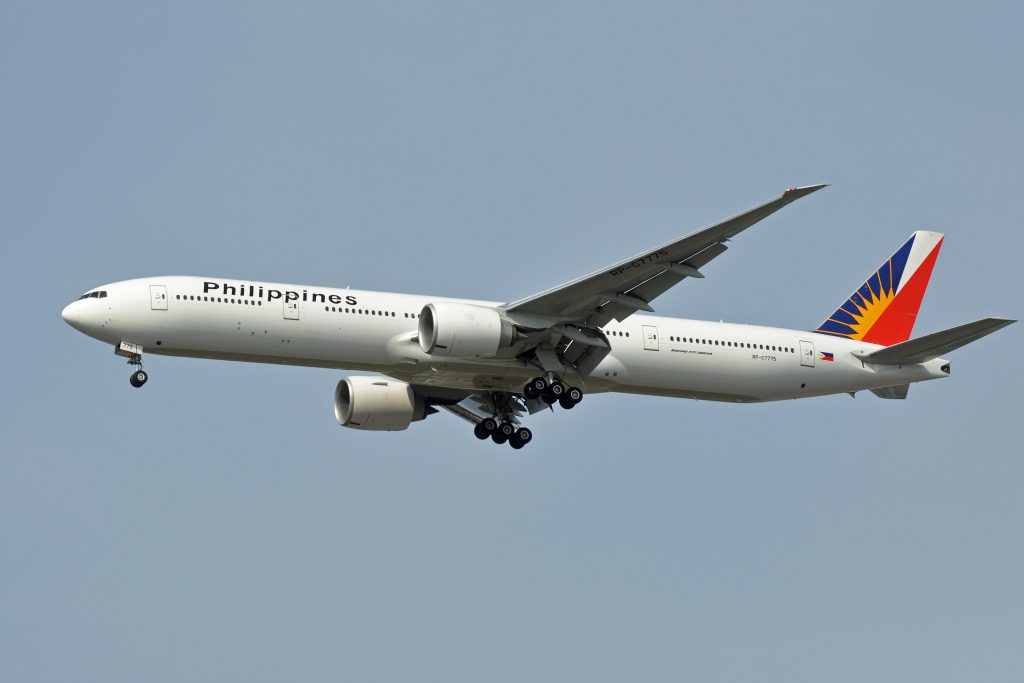
With so many islands in the Philippines, flying makes a lot of sense. The cost of flights here is also very reasonable. The longest flight you will take in the Philippines is 1 hour 45 mins (Manila to Davao). This is also the time it takes to fly to Hong Kong. Just about all flights within the Philippines from Manila take about one hour.
Transferring Between Terminals
Luckily there is now free air-side transfer buses between all four airport terminals. These depart every 15 minutes and all you need to avail of the service is a valid a ticket from the day you arrived or the following day. Make sure you allow yourself plenty of time for transferring to your connecting flight, especially if you have to go to another terminal. If you are heading straight into Manila, there is a bus service available called UBE Express. This will take you to most of the key points around Manila. It also services some of the major hotels. This service is available from Terminals 1, 2 and 3 and departs every 30 minutes for the cost of P300/person.
If you do not wish to avail of any of the shuttle/bus services and take a taxi, there are a few things that you need to be mindful of. When you exit the airport terminal, you will be approached by seemingly helpful people (looking official). They will be yelling and waving their arms offering all sorts of help from carrying your luggage, to getting a taxi or car. This can actually be quite overwhelming for first-time visitors. It can catch you off guard when you are tired from flying and least expecting it. These people are known as “fixers”. They are offering to “fix” any problems you might have on arrival. How to find transport, how to get to your hotel, how to find an ATM, assistance with carrying your luggage – the list goes on.
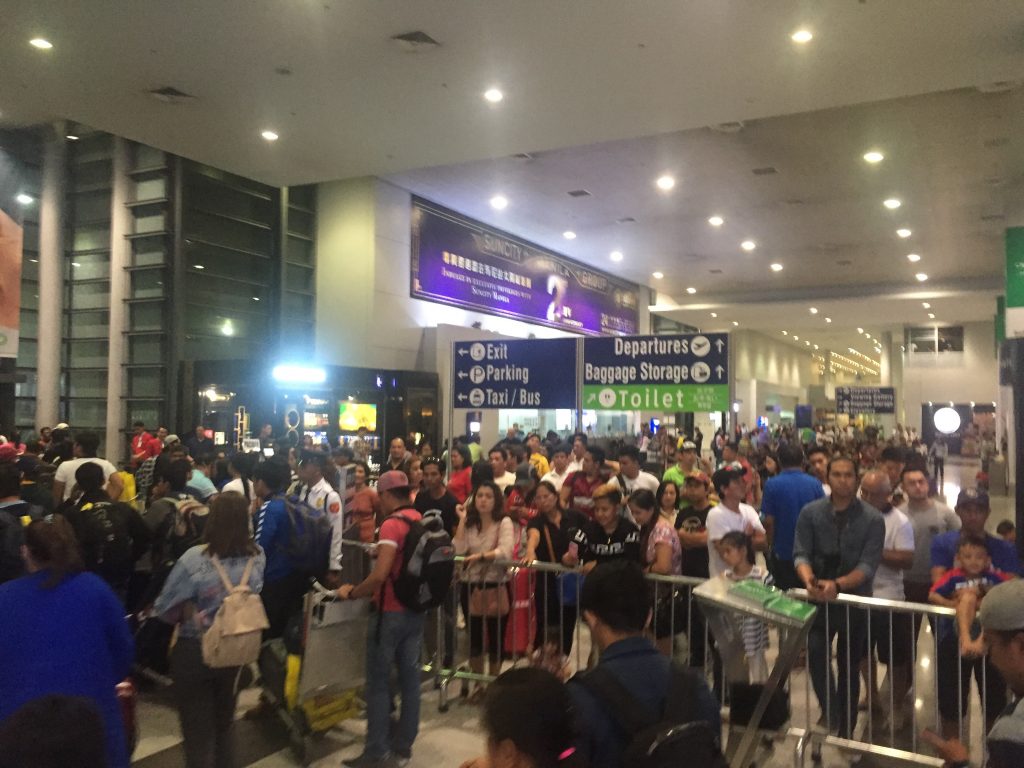
When you get through customs at NAIA T3, this is what you are confronted with in the arrivals area. This is just a regular Monday morning flight arrival. Now I know how the Beatles felt in their hay day!
As an Aussie, we are typically very friendly people. If someone approaches us in a friendly or helpful manner, we tend to reciprocate. However, in this case, you simply have to just keep walking past these people. Just about everyone that is offering help is not necessarily there to help you. They are there to help themselves by trying to make money from you. The problem here is what are you actually paying them for, and what is a fair price? This is where the problem starts. You can be put on the spot and end up paying a stupid amount for basically a nothing service.
If you’re Caucasian, you will obviously stand out more and become an easy target. So be prepared to be approached at the airport by these people. You can avoid this situation if you pre-book a vehicle with your hotel. This means you will have someone standing to wait for you at the terminal exit with a placard bearing your name. Otherwise, your safest option is to take an airport taxi. These are clearly marked and are usually yellow or white. There is a booking counter at which you can hire them at a set price depending on where you are going. Wherever possible, you need to avoid the use of a regular taxi. Nine times out of 10 they will take advantage of you and not turn their meter on and rip you off completely.
Public Transport
The public transport system in the Philippines is not as organised and efficient as the public transportation systems in other countries. There are a number of options including the MRT, LRT, jeepneys, tricycles and buses. However, these rarely follow a schedule. It can become quite a hassle getting from one destination to another using multiple modes of public transport. Then you have the problem with traffic which can be made even worse during the wet season or on the customary Friday payday as mentioned earlier. Here is a summary of the options:
Jeepneys
One of the most iconic and common methods of public transport is the jeepney. Jeepneys are a common sight all over the Philippines. These were originally made from the surplus jeeps left over by the US military after the Second World War. They are a cheap and convenient form of transportation for Filipinos. Some foreigners do use jeepneys but they are mostly used by locals. These are very colourful vehicles that stand out for more reasons than one.
You will find the route, or the start and end point painted on the side of the jeepney. To this day I still don’t know if there are officially any stops or whether you can just get on or off at random. There are jeepney terminals which make it pretty obvious where the start or end point is. However, getting on or off during its route is something I have never been able to work it out. Most of the locals are usually more than happy to assist with regards to where you can or can’t get off or on. You are also able to ask the driver to stop by using the words “para po” which means stop, please.
The official fare for catching a jeepney at the time of writing is P8 for the first four kilometres, then P1.50 for each kilometre after that. Just like most of the costs in the Philippines for transportation, nothing is really published. Generally, by telling the driver where you want to go when boarding, he will tell you how much the fare is. It is also best to pay your fare with the smallest denominations of money possible, preferably coins.
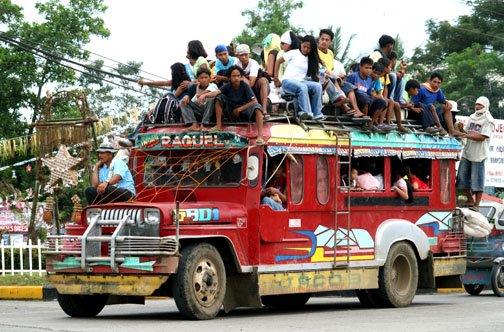
A true icon of the Philippines, the jeepney. If you were to ask any Filipino how many people can you fit in a jeepney, you will be met with the answer “one more”. When you look at this photo, you can clearly see why!
Jeepneys are usually not air-conditioned and are open air at the back. This does not offer many reprises from the pollution from other vehicles on the road. They can be very squishy, hot and generally uncomfortable. They are also notorious for having pickpockets on board so you really need to make sure you secure your personal belongings. If you are only planning to travel a short distance, then you might consider using a jeepney just for the experience. However, I would sincerely suggest that you take a cab or Grab if you have the opportunity.
Buses
Provincial buses travelling from Manila are actually a fairly safe option. You do have the option of travelling in an aircon bus with approximately 90% of the buses having air conditioning. However, this option does cost slightly more but is well worth it if you are taking a long journey. Most of the provincial buses also have wifi and television entertainment on board. If you are travelling to a province you will need to locate the relevant bus terminal in order to pay for and catch the bus to the desired destination. The bus fares will obviously vary depending on where you are going, and you can find most of the information you require on the internet.
Metro buses are vastly different to what you expect if you are coming from an organized city. Most of them do not have aircon and the drivers of these buses tend to be a little crazier. They will often drive in the wrong lane, run red lights, swerve in and out of traffic, and drive at speeds that would make you think they were attending to an emergency. Most buses have a beginning and end destination. However, despite even having designated stops along the route, they may stop anywhere. This can cause all sorts of traffic problems.
Tricycles
Tricycles are essentially a motorbike that has been converted with an extra cab/sidecar on the side to accommodate more people. I have seen tricycles with as many as 15 people on them however, this was in the province and is more of an exception than the rule. Tricycles can be used to cover long distances but are generally put to use on routes that aren’t accessible by jeepneys and buses. This means that they will generally be able to take you down narrow streets and even off-road tracks. Depending on how far you need to go, you might find the tricycle fare only costing you P20-30.
In the provincial areas, aside from tricycles, they also have what is known as habal habal. These are essentially just motorcycle taxis without the cab/sidecar of a tricycle. Sometimes they have an extended seat and I have seen up to seven people sitting front to back, utilising the fuel tank as a seat, particularly with children.
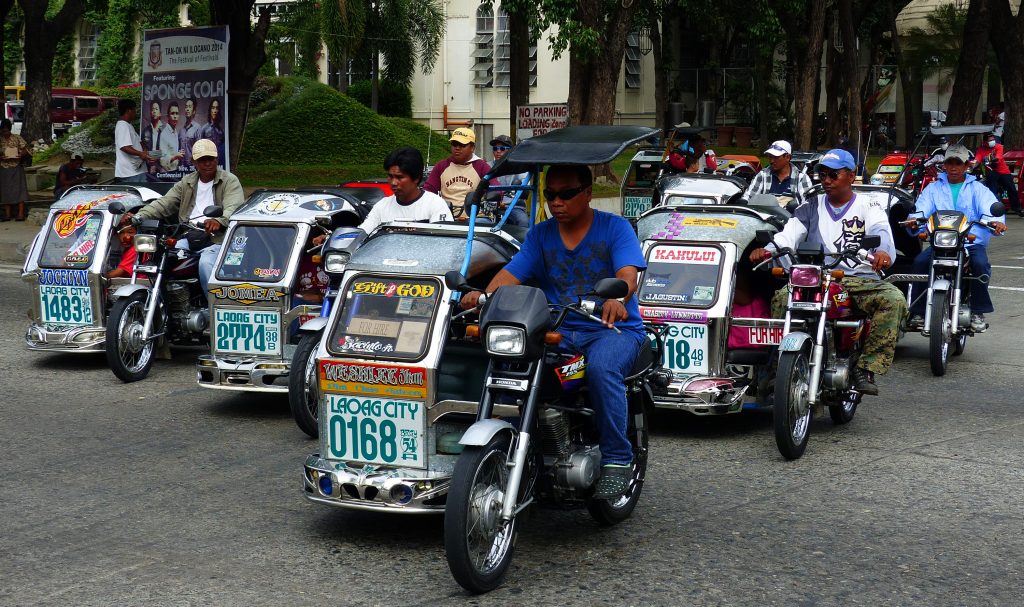
Tricycles are a very convenient way for locals to travel however, they really do clog up the road and cause a lot of traffic congestion. Sometimes you get stuck behind them and with a lot of the roads and streets being so narrow, you can’t get past.
MRT/LRT
The LRT (Light Railway Transit) and the MRT (Metro Railway Transit System) is really the fastest way to get from one side of Metro Manila to the other. There are three lines at the time of writing, the LRT1, LRT2 and MRT3. All three lines can now be accessed with a beep card which allows you to use all three lines under the same payment system. LRT1 (Green Line) runs from Baclaran in Pasay City all the way to North Ave in Quezon City, LRT2 (Blue Line) runs from Santolan in Pasig City to CM Recto in Manila and MRT3 (Yellow Line) runs from all the way along EDSA from Baclaran in Pasay City to North Ave in Quezon City.
Having travelled on the MRT on a number of occasions, I know it can get packed with people, especially during peak times. It can also be relatively unreliable but do run on a very regular basis, approximately every 10 minutes. However, it is important to consider that this is the only mode of transport in which you can travel uninterrupted, aside, of course, from stopping at each station, from one side of Metro Manila to the other.
Water Transport
With the Philippines consisting of over 7600 islands, water transport is plentiful and in demand. There are basically four major types of water transport that we will take a look at now as part of these Survival Tips:
Bangka Boats:
These boats are the heart and soul of the Philippines and come in all shapes and sizes. I have heard them aptly described as the “jeepneys of the sea”. Bungka boats (also known as pump boats) are generally wooden boats with bamboo outriggers to help it keep balance. They range in size from two-man fishing boats right through to passenger boats which are capable of accommodating up to 30 people or sometimes more.
They are usually all motorized and are used for all sorts of activities from transporting of cargo, ferrying people, fishing and island hopping as well as scuba diving and other water activities. Depending on your journey they are a fairly cheap mode of transport. However, you should be warned about utilising them during rough seas or inclement weather. Most major ports around the country have a bungka terminal in which their regular routes and set schedules. You can also hire bungkas for private use if you wish to go island hopping or some other adventure.
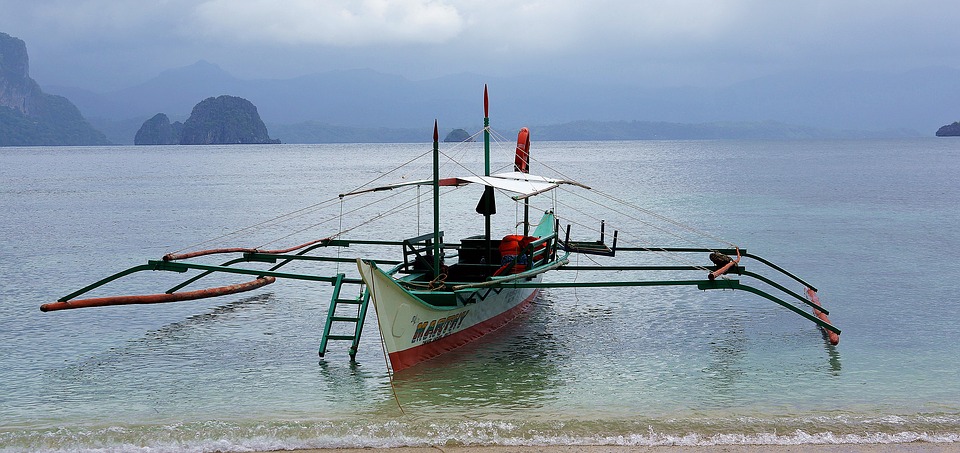
The bungka boat is almost as iconic to the Philippines as the jeepney. They come in various sizes but all pretty much take on the same shape and design. They are characterised by the bamboo outriggers that enable the vessel to stay balanced.
Passenger Liners:
These boats normally carry up to 4,000 passengers as well as cars and other vehicles. They are usually used for long hauls and although fairly reliable, changes in weather conditions have more of an effect. As a result, this can result in cancellations and postponements, which can play havoc with schedules.
RORO’s (Roll On Roll Off):
As the name suggests, these boats are designed more for transporting vehicles, everything from trucks and cars, through to buses and motorbikes. This means you are able to drive on and off these boats. These boats service what is known as the “nautical highway”, which means they connect the islands and national highways together. This allows you to essentially drive from Manila all the way to Davao. They do have cabins to seat you, but you are also permitted to remain in your vehicle. They are generally fairly slow but as they don’t travel particularly long distances, this is tolerable.
Fast Ferries:
Fast ferries are only used for passenger transport and tend to be less crowded than passenger liners or RORO’s, as they typically cost more. They are usually used for short hauls in between islands and travel time can be cut by half compared to RORO’s. They also have enclosed air-conditioned cabins that allow you to travel in comfort. The two main operators in the country are SuperCat and Ocean Jet.
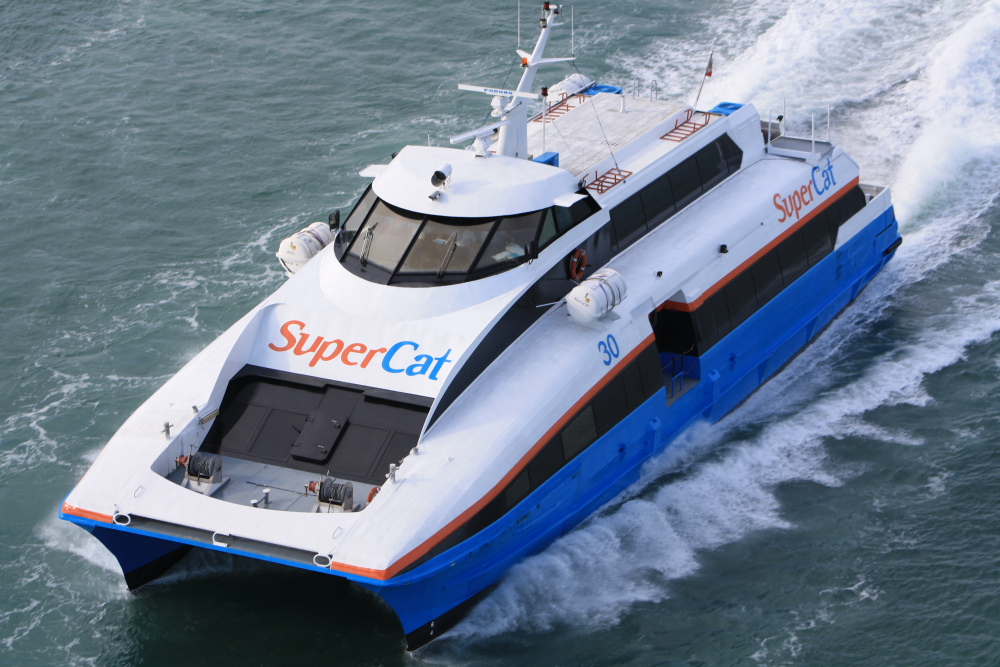
This is the SuperCat Fast Ferry for those that want to travel quickly and comfortably. Unfortunately, it doesn’t operate countrywide. There are only 4 routes to choose from and these are mostly in the Visayas region. Other companies like Ocean Jet have several more destinations to choose from.
With all of the above modes of water transport, it is essential that you check if there are life jackets on board to ensure your safety. You cannot take this for granted in the Philippines.
So there we have it. When it comes to travelling in the Philippines just remember – it’s the journey, not the destination. Try your best not to get frustrated by the mucking around. Just try your best to enjoy it as there really is so much to see and do and you don’t want the journey to spoil the destination.
For the next survival tip on Cash In The Philippines, please click Survival Tip #10 to read more. If you missed the previous survival tip on Filipino Cuisine and Delicacies, click Survival Tip #8 to read more. If you have any comments about transport and infrastructure in the Philippines, please feel free to leave your comments below. I would love to hear from you.
Philippines Fun Fact:
The jeepney is sometimes referred to as the “King of the Philippine roads.” It is a descendant of the Jeeps American troops drove in the Philippines during World War II. Second- and third-generation jeepneys have air conditioning units and closely resemble minibuses. They can carry up to 16 passengers (courtesy of https://www.factretriever.com/philippines-facts).


